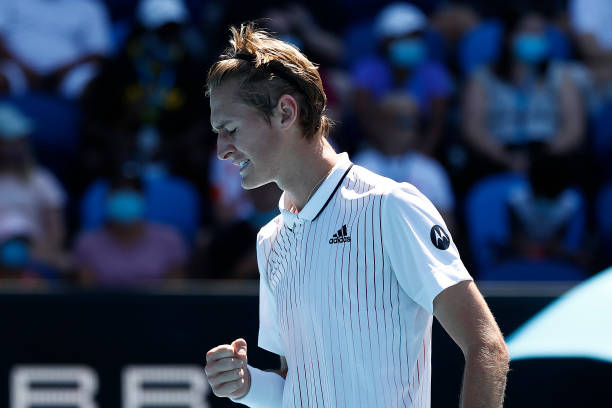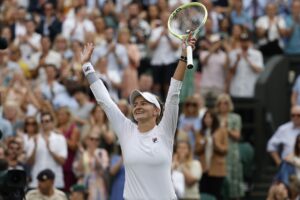The Australian Open has a couple big upsets already on the men’s side, with World #40 Sebastian Korda providing the biggest one so far, beating #12 Cam Norrie in three sets. The victory continues Korda’s upward trend from 2021, despite unideal circumstances entering the tournament, and provides a template for success that could lead him even further up the charts.
Sebastian Korda Starts Strong
The tone of the match was set early, with Korda winning an early break and cruising to a 6-3 first set victory. Aggressive hitting and strong forehands were the main diet of his strategy–one that Korda and his team might be wise to re-visit many times in the future. Korda has a natural, though controlled, aggression, which one might not suspect from his casual and friendly personality. But he was at his best against Norrie when hitting hard forehands to the corners and controlling the pace of play. His backhand is less powerful from the baseline, but he used it aggressively as well to hit winners on angles.
Korda’s offense was helped along by a high serve percentage, while Norrie struggled to make his serves all match. The American has reasonable power on his serve (averaging a higher serve speed than Norrie), helped by his length though not by his frame (he is listed as 6’5″, 175 lbs.). Heavy serves added to his arsenal would help to round out his game, and could be achieved by packing on a bit more muscle.
The second set was even more lopsided, with Korda winning to love, as Norrie’s game and especially his forehand deserted him. The third set was more competitive, as Norrie started to find his game again, but it was too little too late, and the American took the match with a 6-4 final set. He commented afterward that the fast surface suited his preference, and he certainly looked the more comfortable on court, relaxed in his mannerisms to the point of appearing laconic. (Norrie’s long and loopy forehand motion is not as well-suited to a fast-moving court.)
Lofty Comparisons
Korda’s style of play is reminiscent of Alexander Zverev, as is his on-court demeanor and friendly personality. Both come from tennis families, they are similar in size (though Korda is slimmer), and both like to play from the baseline with heavy forehands and two-handed backhands. They are fairly aggressive, avoid the net, and take long strides with lanky frames that cover the court well. Zverev could serve as a good model for Korda’s development, and if Korda could develop his physique to match Zverev’s, he might find himself firing off the 135 mph serves that make his counterpart so dangerous. Korda has the makings of a prototypical modern tennis player, and also stands a fair comparison to Daniil Medvedev and Hubert Hurkacz, both Top 10 players.
Thriving Despite Imperfect Circumstances
The win is the first for Korda at the Australian Open in his young career. The high quality of his play also comes as a bit of a surprise, as he was stuck in his room for a week with a positive COVID test before the tournament. He also hadn’t played in Sydney, and was getting his first on-court experience of the year. (He did credit practice time with Norrie as having taught him some things about the Brit’s game, and having helped inform the aggressive strategy that he and his team settled on before the match.) All things considered, it’s hard to imagine the match having gone any better for him than it did, and speaks well of Korda’s mental strength and his ability not to let the imperfect circumstances derail his focus and his preparedness.
Norrie will look to find his 2021 footing again next tournament after a disappointing appearance in in Melbourne, and Korda will face the Frenchman Corentin Moutet (who sits just inside the Top 100) in Round 2. Such a strong start after so little preparation bodes well for the American, and if he and his team can keep him in the strategic groove that worked so well against Norrie, Korda could not only meet his stated goal to reach the Top 25 by the end of the year, but maybe a lot sooner.
Main Photo:
Embed from Getty Images






